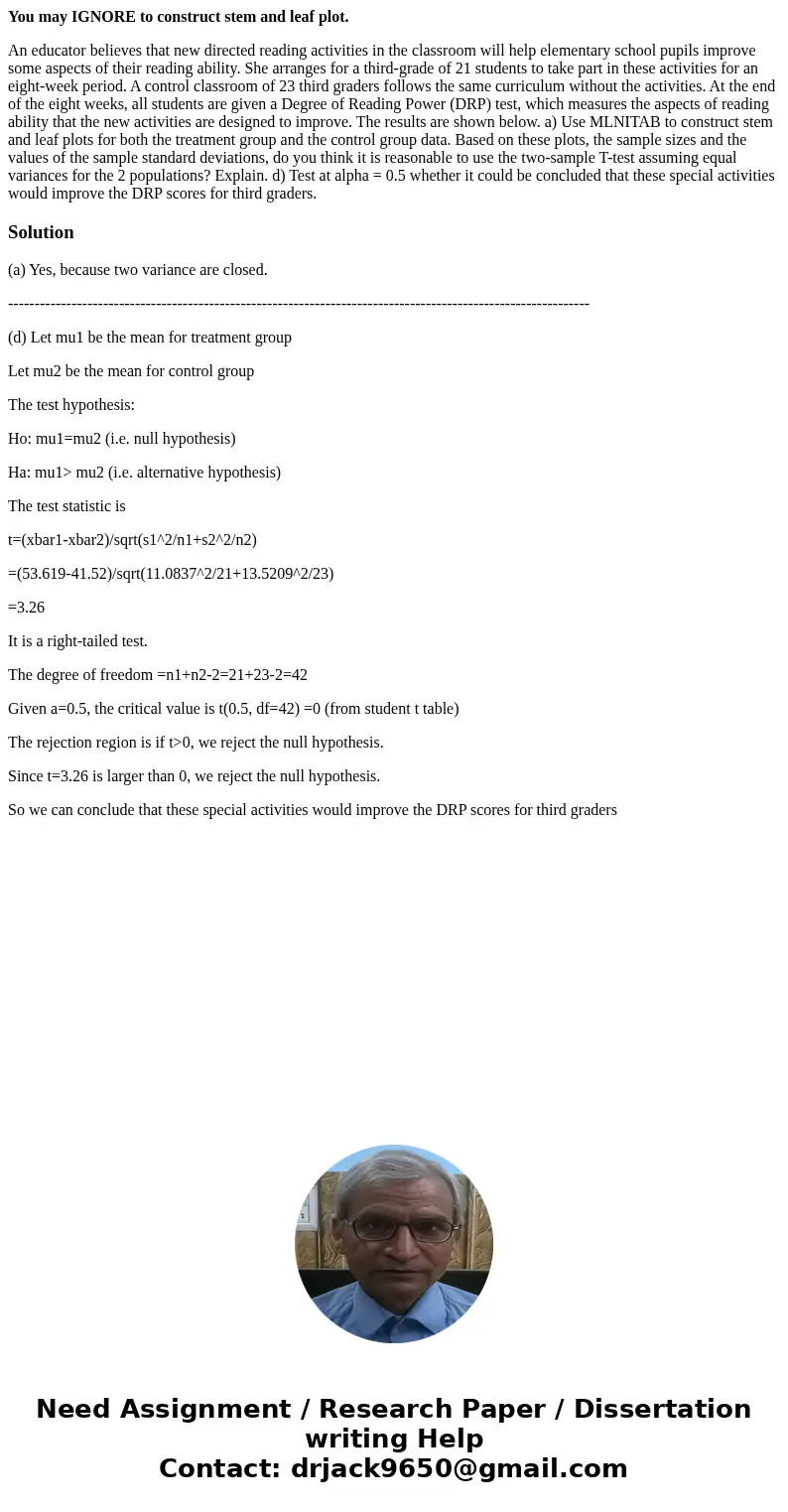You may IGNORE to construct stem and leaf plot An educator b
You may IGNORE to construct stem and leaf plot.
An educator believes that new directed reading activities in the classroom will help elementary school pupils improve some aspects of their reading ability. She arranges for a third-grade of 21 students to take part in these activities for an eight-week period. A control classroom of 23 third graders follows the same curriculum without the activities. At the end of the eight weeks, all students are given a Degree of Reading Power (DRP) test, which measures the aspects of reading ability that the new activities are designed to improve. The results are shown below. a) Use MLNITAB to construct stem and leaf plots for both the treatment group and the control group data. Based on these plots, the sample sizes and the values of the sample standard deviations, do you think it is reasonable to use the two-sample T-test assuming equal variances for the 2 populations? Explain. d) Test at alpha = 0.5 whether it could be concluded that these special activities would improve the DRP scores for third graders.Solution
(a) Yes, because two variance are closed.
--------------------------------------------------------------------------------------------------------------
(d) Let mu1 be the mean for treatment group
Let mu2 be the mean for control group
The test hypothesis:
Ho: mu1=mu2 (i.e. null hypothesis)
Ha: mu1> mu2 (i.e. alternative hypothesis)
The test statistic is
t=(xbar1-xbar2)/sqrt(s1^2/n1+s2^2/n2)
=(53.619-41.52)/sqrt(11.0837^2/21+13.5209^2/23)
=3.26
It is a right-tailed test.
The degree of freedom =n1+n2-2=21+23-2=42
Given a=0.5, the critical value is t(0.5, df=42) =0 (from student t table)
The rejection region is if t>0, we reject the null hypothesis.
Since t=3.26 is larger than 0, we reject the null hypothesis.
So we can conclude that these special activities would improve the DRP scores for third graders

 Homework Sourse
Homework Sourse